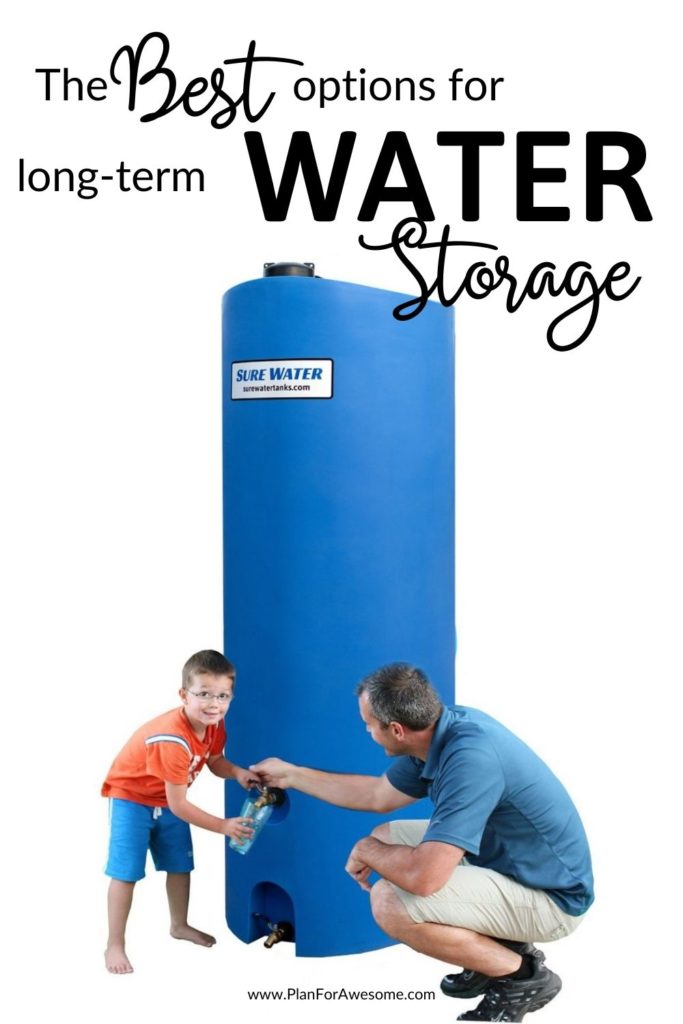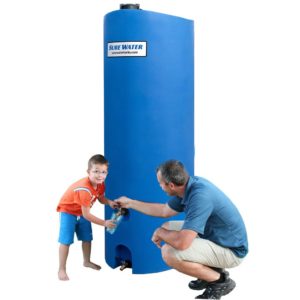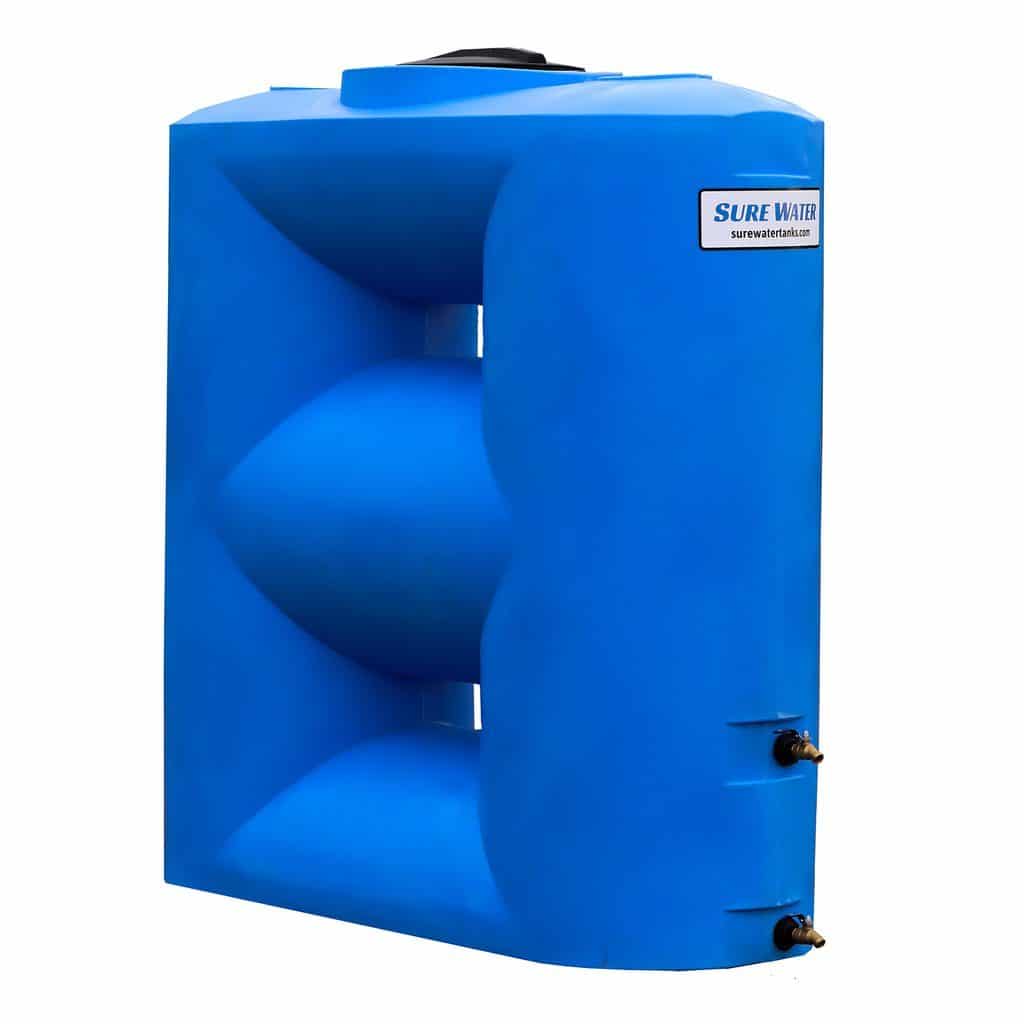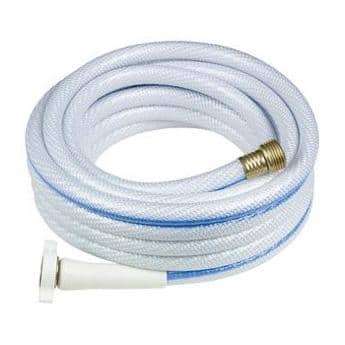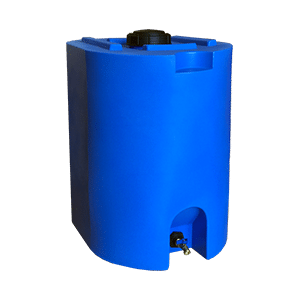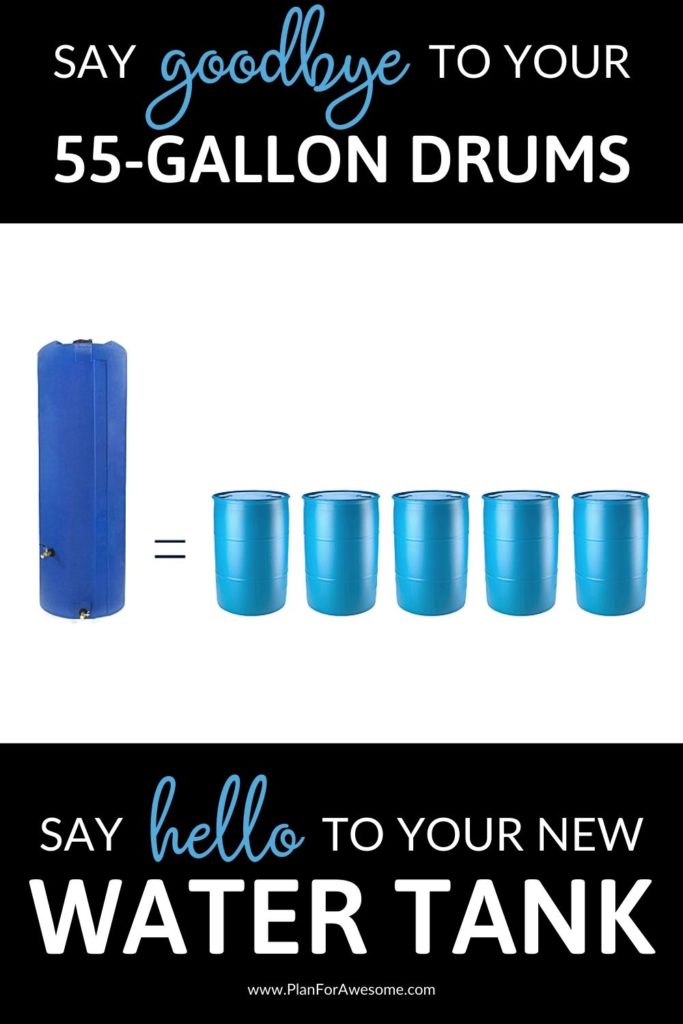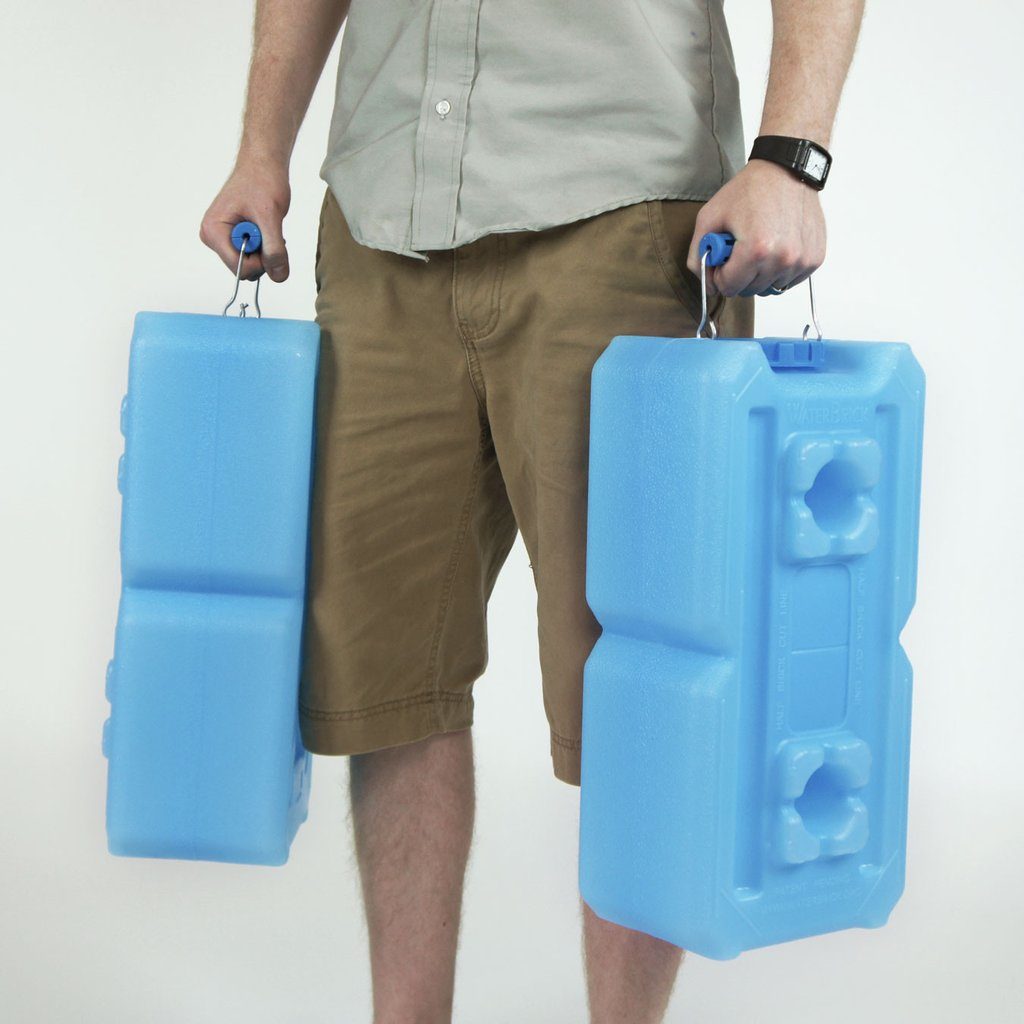Long-term Water storage can be an overwhelming topic, especially if you are trying to store water for an entire family. But seriously – it doesn’t have to be overwhelming! I absolutely LOVE the water storage we have been using for our family for the past several years. And I’m sharing it with you right here.
**This post contains affiliate links, which means if you click on a link and make a purchase, I may make a small commission at no extra cost to you**
**FREE PRINTABLE PDF summary of this post available for sharing with friends, family, neighbors, church groups, etc.
Water storage is EQUALLY IMPORTANT to food storage.
Water storage is SO IMPORTANT. However, a lot of people overlook water. They go straight to food, and just assume there will always be an endless supply of water at their disposal. If this is you, I am so glad you’re here. Because food storage is pretty pointless without water storage.
If you don’t trust me, trust the American Red Cross.
Why Should I Store Water?
Clean drinking water may not be available in your own home following a disaster. Access to your water source could be blocked, or even contaminated.
- Living in California, earthquakes are always a possibility. If water lines were damaged due to an earthquake, BAM. No water.
- The same goes for damage done by hurricanes, tornados, etc.
- As we’ve seen in Texas, record low temperatures damaged infrastructure and froze pipes on a large scale. This affected 12 MILLION PEOPLE. In Texas, of all places!
The CDC gives these same examples as causes of possible water contamination:
“Septic (i.e., onsite wastewater) systems and community wastewater systems … can be damaged during an emergency such as a flood, hurricane, or earthquake. This damage can lead to contamination of the environment and drinking water supply and result in an increased risk for disease.” (CDC.gov)
Because of this, it is super important to have a Plan B for your immediate water needs.
How Much Water Should I Store for my Family?
The Red Cross and FEMA both recommend having 1 gallon of water per person per day. (redcross.org / Ready.gov). That is a hefty amount of water if you plan on storing enough water to last you a decent amount of time, especially if you have a few kids.
Why So Much Water?!?
Does one gallon of water per person per day seem a bit excessive? I mean, no one in my family drinks a gallon of water each day! But this is for so much more than drinking…
Normal Consumption
- The most obvious reason you should store water would be for drinking
- Keep in mind that if an emergency happens in the summer, everyone should be drinking more water than normal (especially if power is out and there is no A/C)
- Most food requires some sort of water in order to prepare it
- Pasta
- Rice
- Cooking vegetables
- Recipes themselves require water
- Food storage requires water for rehydration
Hygiene
- Washing your hands
- Bathing (even a sponge bath)
- Brushing your teeth
- Washing your face
- Laundry
Medical Needs
- Medical emergencies
- Dehydration from sickness
- Nursing moms
General Water Storage Container Stuff to Know
- Make sure that whatever you use is FOOD-GRADE. And YES, there is a difference between food-grade and non-food-grade!
- Do not use any plastic or cardboard containers that have had milk or fruit juice in them.
- Reason: Milk protein and fruit sugars can’t be fully removed from these containers, causing an environment for possible bacteria growth
- Clean ALL containers that you use (even if they are brand new!)
- Wash with dish soap and water, rinsing completely
- Sanitize with a ratio of 1 tsp of unscented liquid household bleach to 1 quart of water
- Swish the bleach water in the container, ensuring that ALL parts get hit
- Rinse with water
- Fill container with water
- If the containers are small, filling from the tap is fine
- If containers are too large to fill from the tap, be sure to use a food-safe hose
- If your water company treats your tap water with chlorine, nothing additional is needed
- If your water company does not treat your water, add 2 drops of non-scented liquid household chlorine bleach per gallon of water.
- Put the cap on, taking care to not touch the inner part of the cap, to prevent contamination
- Replace the water every 6 months to 1 year (unless you’ve treated it for longer)
Scroll to the bottom for a free printable of instructions for cleaning your water storage containers, rotating your water, and keeping your safe water clean!
What are the Different Water Storage Options?
My favorite large option is the first one – WATER TANKS.
My favorite small option is WATER BRICKS.
Let’s just start with the best, shall we? I should take that back. Everyone has different circumstances and different priorities. But for our family of 7, this is by far THE BEST option. In my opinion, of course.
Water Tank Pros
- ONE thing to find a place for and store. For the whole family.
- ONE thing to clean.
- ONE thing to rotate. For the whole family.
- ONE thing to look at in your garage.
- ONE thing to move.
- EASY to use AND rotate – 2 valves for convenience
- Surprisingly easy to clean by one person
- Can actually be stored outside, in the sun if needed (shade is preferred)
- Water inside rarely freezes
- No need to treat water
- Option to treat water to make it last 5 years, rather than the normal 6-12 month rotation
- BPA Free, Non Toxic, Food Grade, 100% Safe
- FDA Approved
- Made in the USA
Water Tank Cons
- Kind of awkward to clean (but not too bad!)
- Can’t move while full
- Need to fill with a hose
Water Tanks to purchase
This is the link to the 500-gallon water tank that is a normal tank-shape.
Accessories to purchase
My Personal Feelings/experience with a 500-gallon water tank
I have had ZERO regrets purchasing a water tank. It has been just what our family needed to feel good about our water storage situation. I love that I only have ONE container to clean, rotate, move, etc.
When we moved 4 years ago, we emptied the tank and then just stuck it in our garage when we moved in. We kind of ignored/forgot about it for about 3 years. It sat in our garage for THREE YEARS with just a little bit of water in it. I was so scared to open the tank. I was worried it would be ruined. I was preparing myself for a horrible smell. I was pleasantly surprised when we opened it up and … nothing. It didn’t smell. There was nothing growing. We simply dumped out the little bit of water, proceeded to clean the tank, and we were good to go. This experience has solidified my faith in this company and the materials these things are made of.
Water Tanks - Q & A
After sharing our water tank on Instagram, I had several questions that came in, so I thought I’d answer them here.
To fill your water tank you want to use a food-safe/water-safe hose. These are available for purchase on the website as well.
Both the FDA and the Red Cross recommend that you rotate your water every 6–12 months, depending on storage conditions. The dryer the climate, the longer you can go between rotations. Water will also keep longer if you keep the tank in a cool, shaded area (garage, shed, basement, etc). The water treatment kit is a great way to extend the life of the water up to 5 years
Cleaning these tanks really isn’t bad at all!
- Lay the tank on its side on a lawn or driveway. Make sure you don’t smash the black fittings.
- Take the lid off and spray water on the inside of the tank until you have a pool of water.
- Pour a third of a cup of bleach in the tank and roll the tank back and forth to slosh it around to coat the inside.
- Stand the tank up and let the water and bleach completely drain out.
Tanks don’t need to be cleaned every time you rotate the water. However, it isn’t a bad idea to clean them every few rotations.
These things are made for that!
Inside your home is preferred to the garage (they even have tanks that fit through a doorway!)
A garage is preferred to out in the open yard
Shade is preferred to full sun
But if full sun is your only option, you are still okay. You will want to rotate it every 6 months (or even more frequently) if this is the case, but it is still okay! (Even in Arizona)
The water doesn’t typically freeze, but if that is a concern where you live, you can fill it about 90% full to allow room for the water to expand in case it freezes.
These BPA-free, food-safe tanks are made as one composite piece at 700° F by rotational molding. They are molded from a polyethylene composite independently certified by the National Sanitation Foundation (NSF).
The tanks are molded as a one-piece composite and have no seams. The line that appears to be a seam around the top is a seam in the metal tank mold, not the plastic tank.
The water tanks are too big for your normal post office or UPS delivery truck. They ship via freight, so it’s a special delivery where you’ll set up a time with the freight company when you’ll be home for them to drop it off.
The water tanks themselves are one piece. The only thing you have to do is install the valves and the lid!
Water Barrel Pros
- Store a lot of water
- Come in various sizes (most common is 55 gallons)
- Less containers to rotate than the jugs or bricks
- Less containers to clean than the jugs or bricks
- Convenient storage, especially if you get stackable ones like these
- Smaller than a tank, so easier to maneuver when moving and cleaning
- Typical and classic way of storing water, so it makes you feel warm and fuzzy knowing that you’re doing it how your parents did it
Water Barrel Cons
- Kind of a pain-ish to rotate if more than one
- Not super user-friendly (meaning the valves are often super close to the bottom, so if they are on the floor, it’s hard to get something under the valve to pour the water into. Lots of people get a pump, and pump it out the top)
- Can’t move while full
- Need to fill with a hose
- Several containers to rotate, rather than ONE tank
- Several containers to clean, rather than ONE tank
- Actually MORE expensive per gallon of water storage than the tanks! WHAT?!
My Personal Feelings about 55-gallon Drums
My personal feelings on 55-gallon barrels is that if you’re going to find the money and the space for these, you might as well go with a tank if at all possible. The tanks come in different shapes and sizes, so if one of the tank options is feasible for your space and budget, I would go with a tank. Having said that, there are circumstances where the drums would be better – just make sure you’re getting the right thing for you!
3 - Water Jugs
Water Jug Pros
- 5-6 gallon capacity
- Affordable
- Easy to move/carry (when empty)
- Built-in handle

Water Jug Cons
- More of a pain to rotate since there’s more of them
- HEAVY
- Have been known to crack and break
- Not stackable, so big footprint for the amount of water they actually store
Water Jugs to Purchase
They are the most convenient small-ish size to store because they stack, and they are convenient to carry because they aren’t too heavy when they’re full.
Water Brick Pros
- 3.5 gallon capacity
- Great for storing water for one or two people
- Easy and convenient to store
- Stackable!!
- Regular shape for sliding under beds, in closets, etc.
- Easy to move/carry
- Less than 30 pounds each when full
- Built-in handle
- Could be used as water for evacuation purposes because they are light enough to lift in to your car
- BPA Free, Non Toxic, Food Grade, 100% Safe
- FDA Approved
- Made in the USA
Water Brick Cons
- Several containers to rotate
- Several containers to clean
- A little more expensive than water jugs per gallon of storage
5 - Water Pouches/Cans
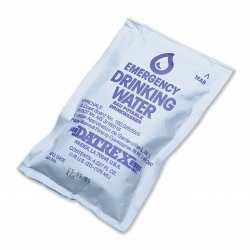
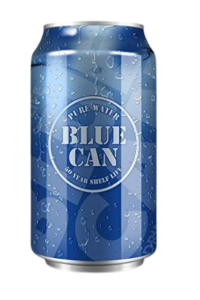
Water Pouches
- 5-year shelf life
- Very rarely freeze
- SUPER easy to rotate
- Easy to store
- Super convenient for things like 72-hour kits because they’re small and can fit anywhere
- User-friendly
Blue Can
- 50-year shelf life
- Easy to store
- Safe up to 130 degrees F
- Easy to drink from
Water Pouches/Cans Cons
- Expensive
- Not very feasible in large quantities
Water Pouches/Cans to Purchase
I have purchased these water pouches and also Blue Can from Amazon.
I personally use these in our cars because they have a longer shelf life and are rated for high temperatures, so they are safe in the summer heat. Unfortunately, their cost doesn’t make them a feasible option for long-term home storage for a family.
6 - Water Bottles
Water Bottle Pros
- SUPER easy to rotate
- Easy to store
- Super convenient for things like 72-hour kits because they’re small
- User-friendly
Water Bottle Cons
- Usually about 1-year shelf life
- Should not be stored in garage or outside
- Price
7 - Used Containers
DO NOT USE containers that have had milk or juice in them. The proteins from milk and the sugars from juice cannot be fully removed from the containers, and can be a breeding ground for bacteria.
Used Container Pros
- FREE!
- Small size, so easy to store throughout your house
- User-friendly
- Great for flushing toilets, etc
Used Container Cons
- Shelf life of 6 months to a year
- More of a pain to rotate since there’s more of them
- Don’t start out clean, so initial cleaning can take longer
- Taste isn’t the best
Conclusion & Free Printable
There are lots of different options for storing water for your family.
Things to consider:
- Cost
- Size
- Shelf life
- Ease of rotating
- Ease of using the water (getting it out of the container)
- Cleaning the container
- Taste

